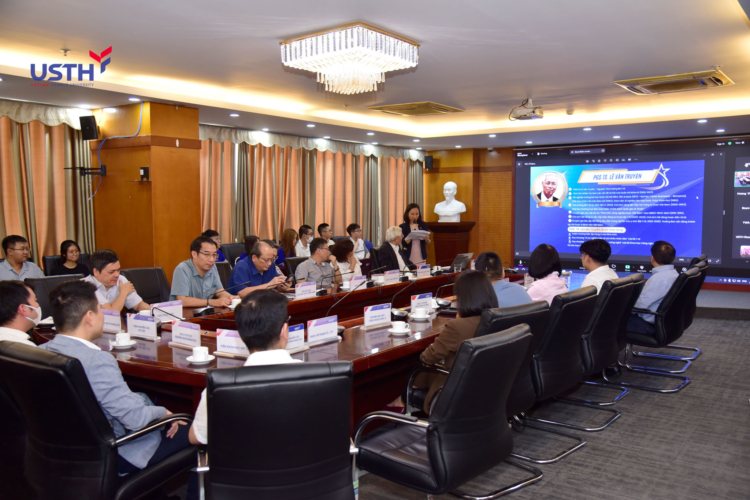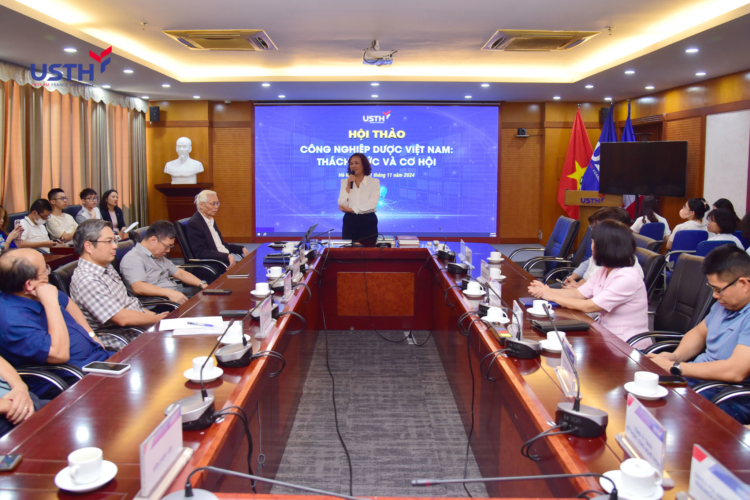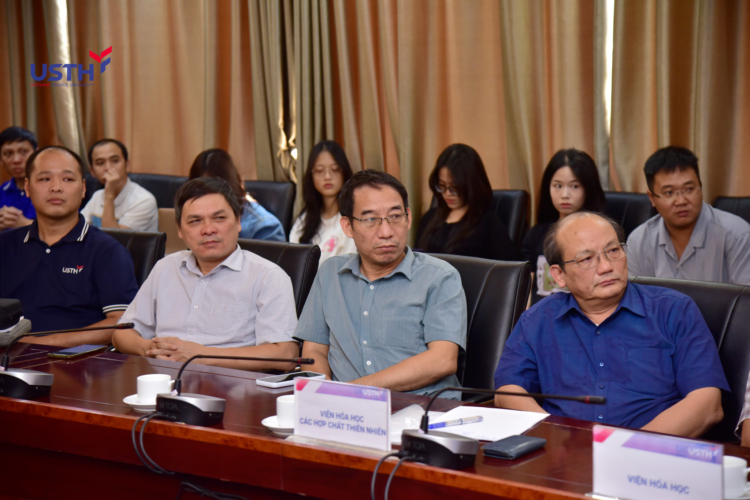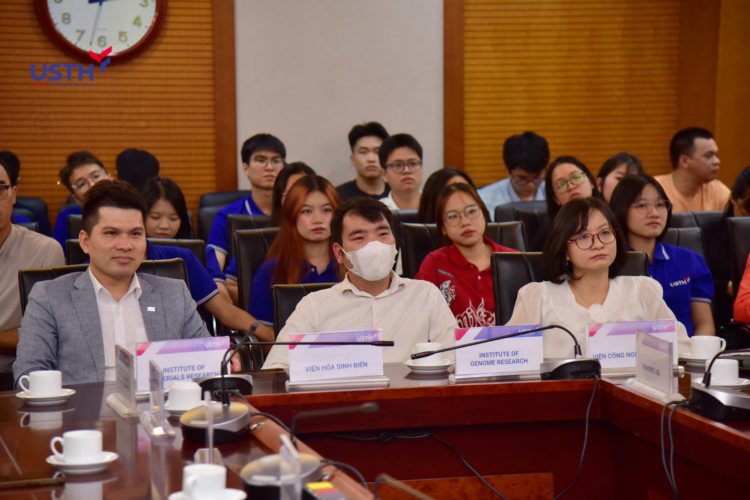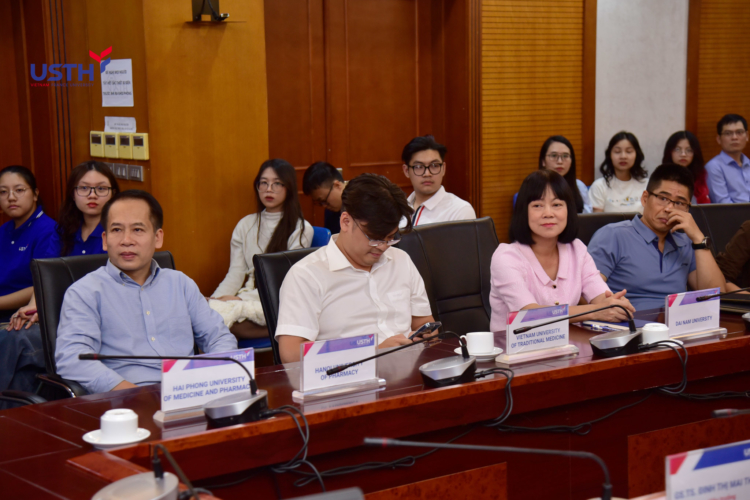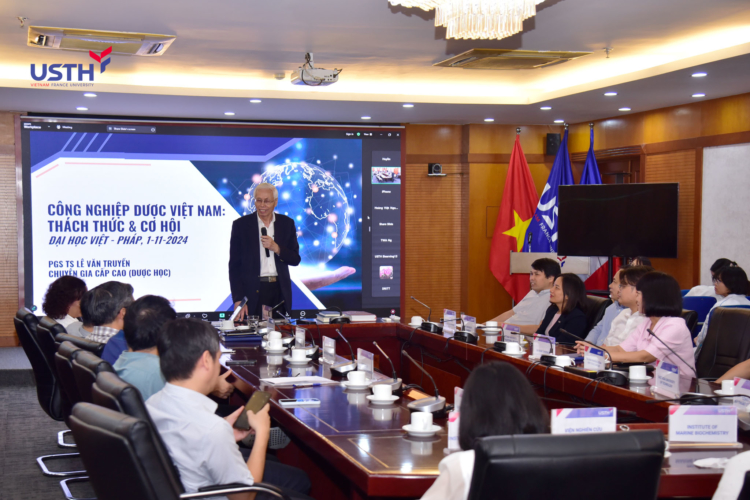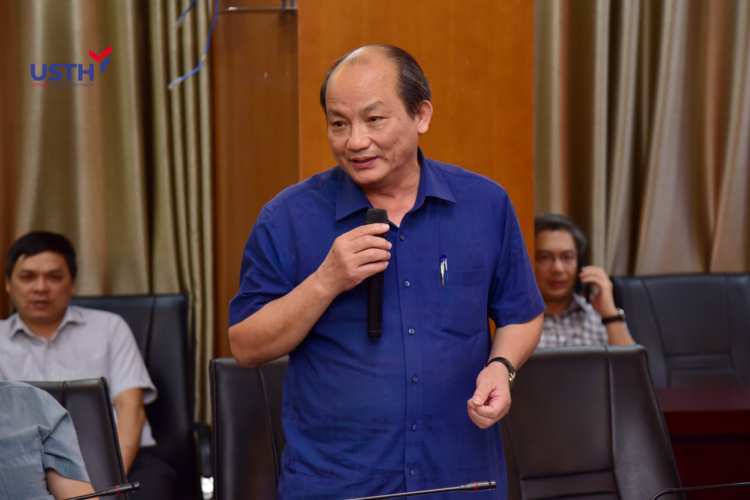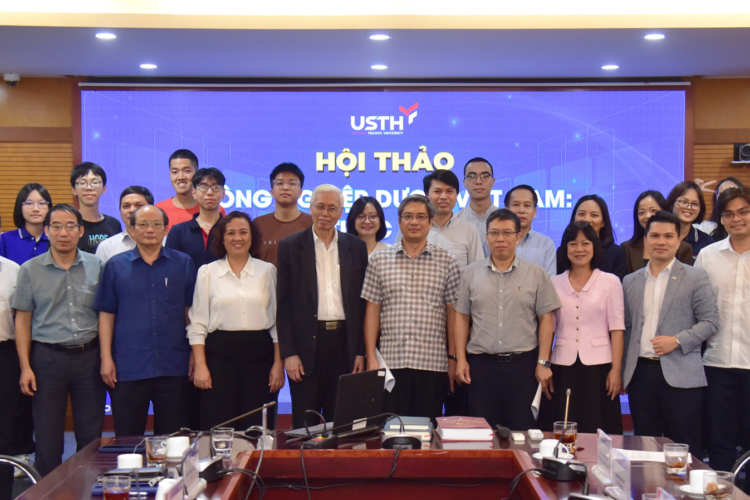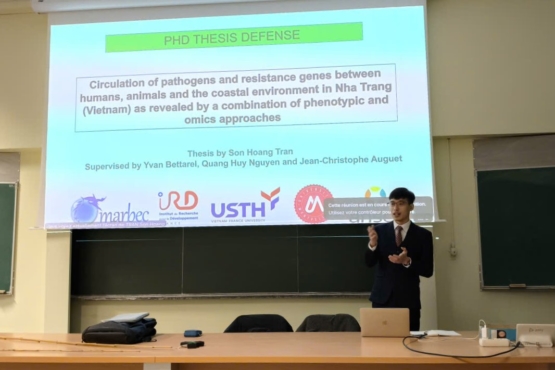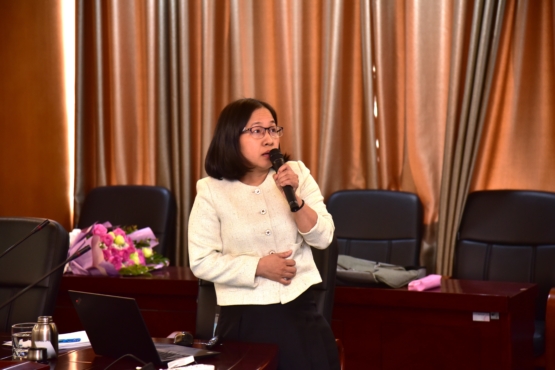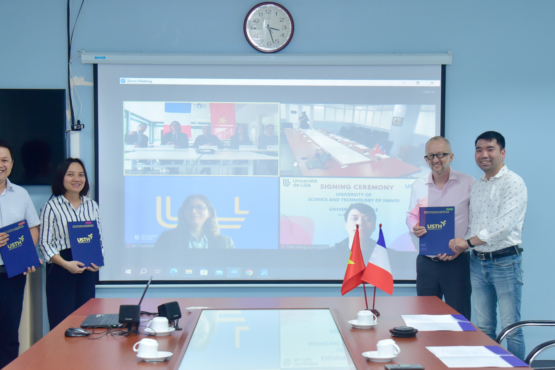On November 1, 2024, the Department of Life Sciences at the University of Science and Technology of Hanoi (USTH) held the seminar “Vietnam’s Pharmaceutical Industry: Challenges and Opportunities.” The event attracted scientists, Department of Life Sciences students, and representatives from various pharmaceutical education institutions.
Opening the seminar, Prof. Dinh Thi Mai Thanh, USTH’s Rector, welcomed all participants and extended special thanks to Assoc. Prof. Le Van Truyen, former Deputy Minister of Health, Vice Chairman of the Social Affairs Committee of the IX National Assembly, and the senior expert in pharmacology. The speaker shared an in-depth analysis of Vietnam’s pharmaceutical landscape, highlighting both the opportunities and challenges the domestic industry faces in an era of international integration with the attendees, lecturers, and students.
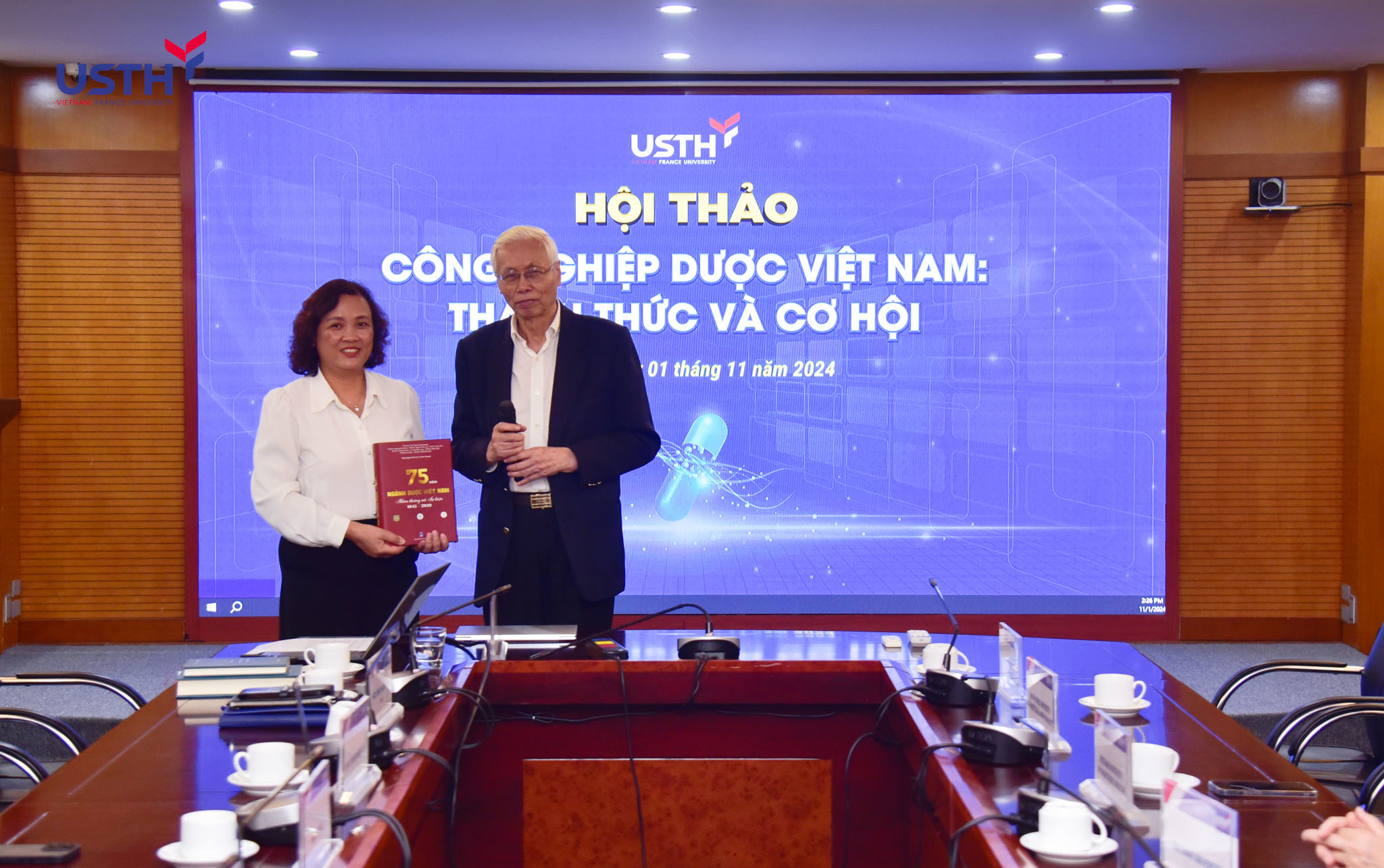
Opportunities for Development in the Pharmaceutical Industry
The speaker emphasized notable growth opportunities, particularly in the context of Vietnam’s rapidly aging population and increasing demand for pharmaceuticals, which create favorable conditions for local companies to expand and strengthen their position in the market. Vietnam’s pharmaceutical industry stands before significant growth opportunities. Pharmaceuticals continue to grow to adapt to an aging population and rising healthcare demand. Vietnam’s large market, with increasing purchasing power and strong government support, provides a favorable environment for domestic companies to expand and enhance product quality.
Additionally, export opportunities are being bolstered by free trade agreements and international standards, while digital technology is optimizing production and research processes. This is a prime time for Vietnam’s pharmaceutical industry to expand its market and enhance its competitive edge.
Challenges to Overcome
Despite these opportunities, the Vietnamese pharmaceutical industry faces significant challenges. Assoc. Prof. Dr. Le Van Truyen highlighted several key issues:
- Technical infrastructure: Currently, in Vietnam, 17 out of 250 facilities met advanced GMP standards, and over 200 ones met WHO GMP standards; however, none have received WHO pre-qualification. This affects export capacity, technology transfer, contract manufacturing, and international collaboration.
- Production, research, and testing capabilities: Vietnam lacks a concentrated Pharmaceutical-Biotech industrial park with a comprehensive ecosystem including R&D centers, BA/BE testing, clinical trials, quality control, pharmaceutical manufacturing, packaging facilities, and support services.
- Financial capacity: Domestic pharmaceutical companies are small in scale, with limited investment capital and no nationally scaled pharmaceutical conglomerates.
- Structural changes in the ASEAN pharmaceutical market: Vietnamese companies should adapt swiftly to remain competitive.
According to Assoc. Prof. Le Van Truyen, each company must review, adjust, and update its medium- and long-term development strategies, aligning with government direction and the local, regional, and international business environment to enhance the competitiveness of Vietnam’s pharmaceutical industry.
Discussion and Sharing Session
The program concluded with an open discussion, allowing participants and students to interact directly with Assoc. Prof. Le Van Truyen. Questions revolved around specific solutions for developing Vietnam’s pharmaceutical sector, from improving research capabilities to strategies for international integration, to which the speaker provided insightful and heartfelt responses, fostering a spirit of open dialogue and inspiration for all attendees.
Prof. Dinh Thi Mai Thanh closed the program by expressing her gratitude to Assoc. Prof. Dr. Le Van Truyen for his deep insights and dedication, as well as to all attendees, students, and faculty for their enthusiastic participation. She hoped that Assoc. Prof. Dr. Le Van Truyen’s session would help pharmaceutical students grasp the industry’s opportunities and challenges, guiding their studies, research, and development in line with industry directions.

